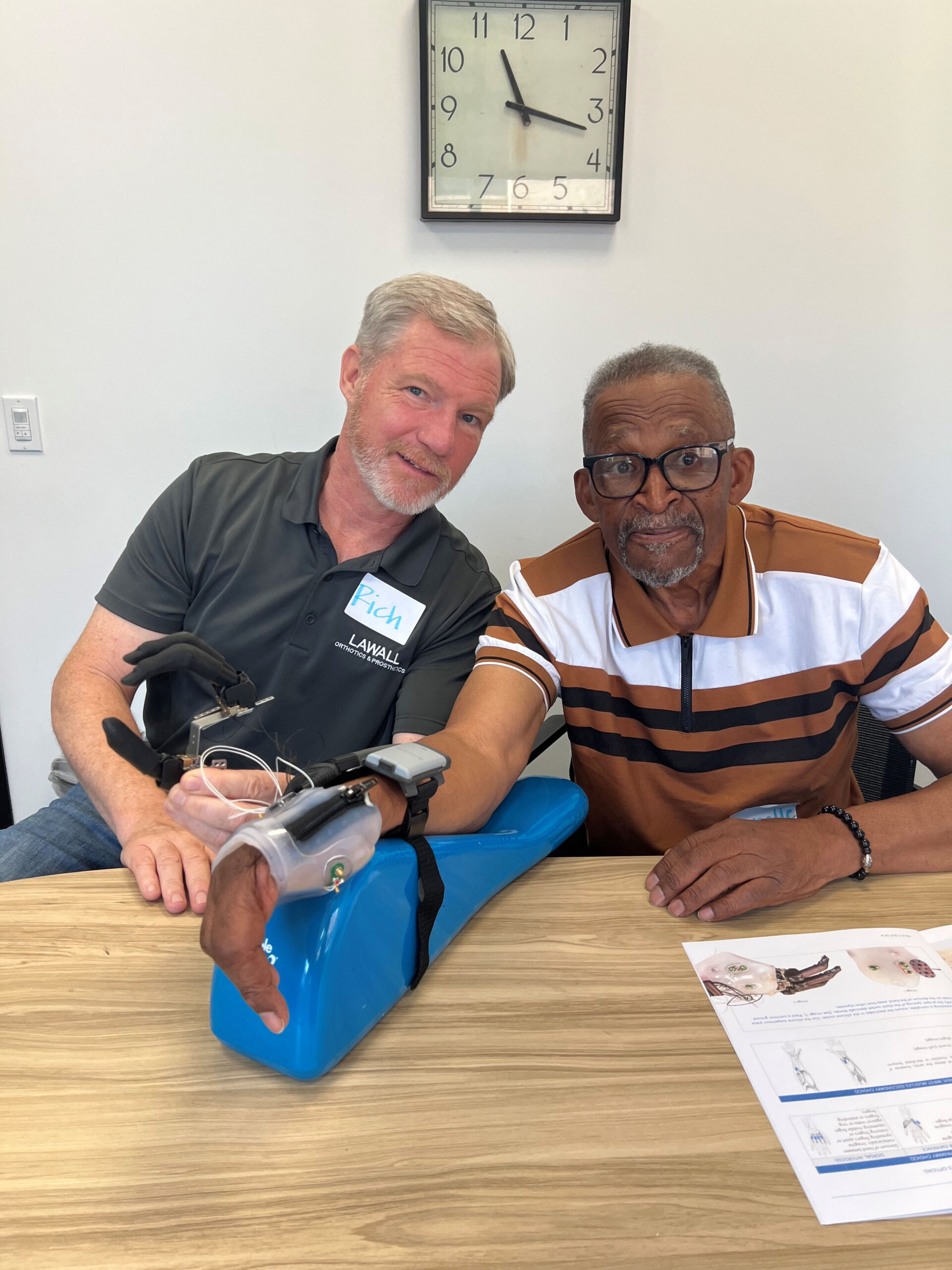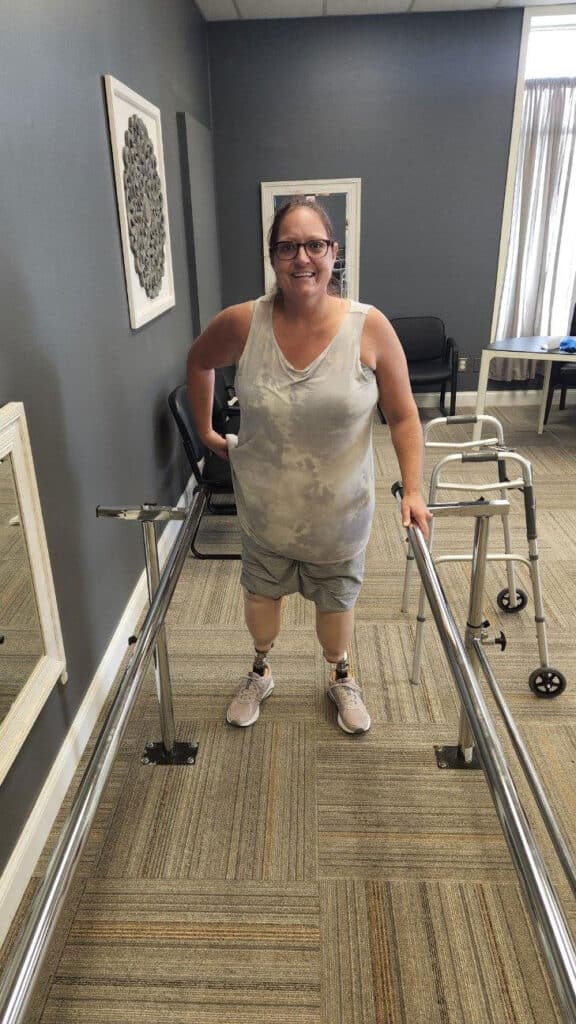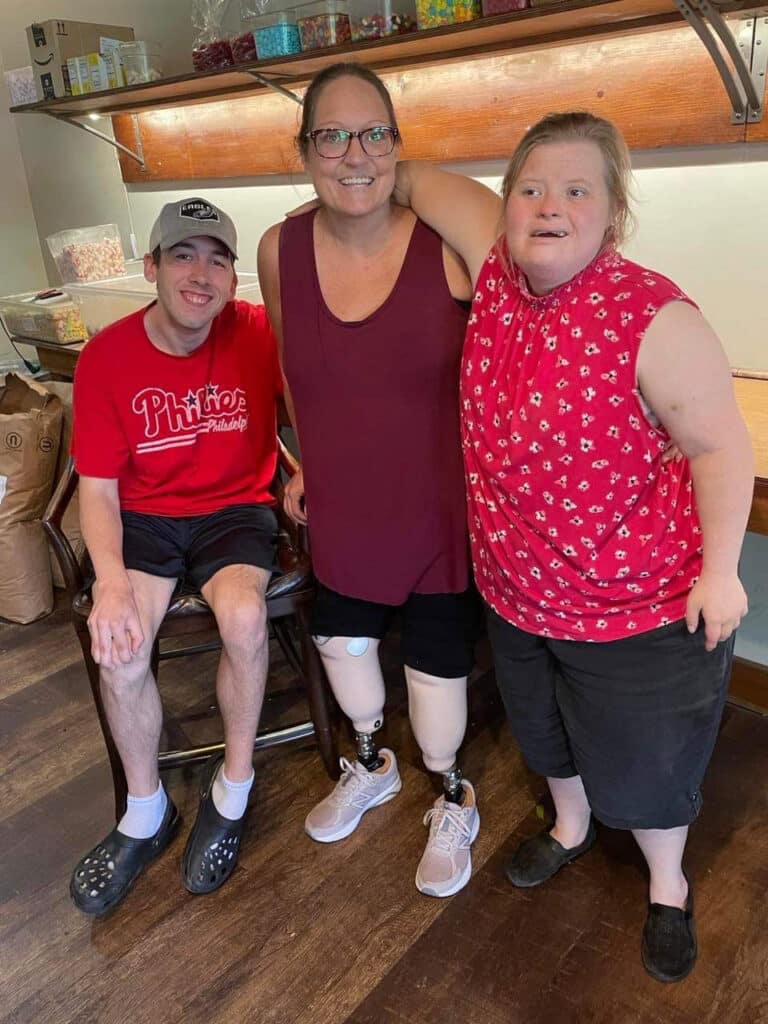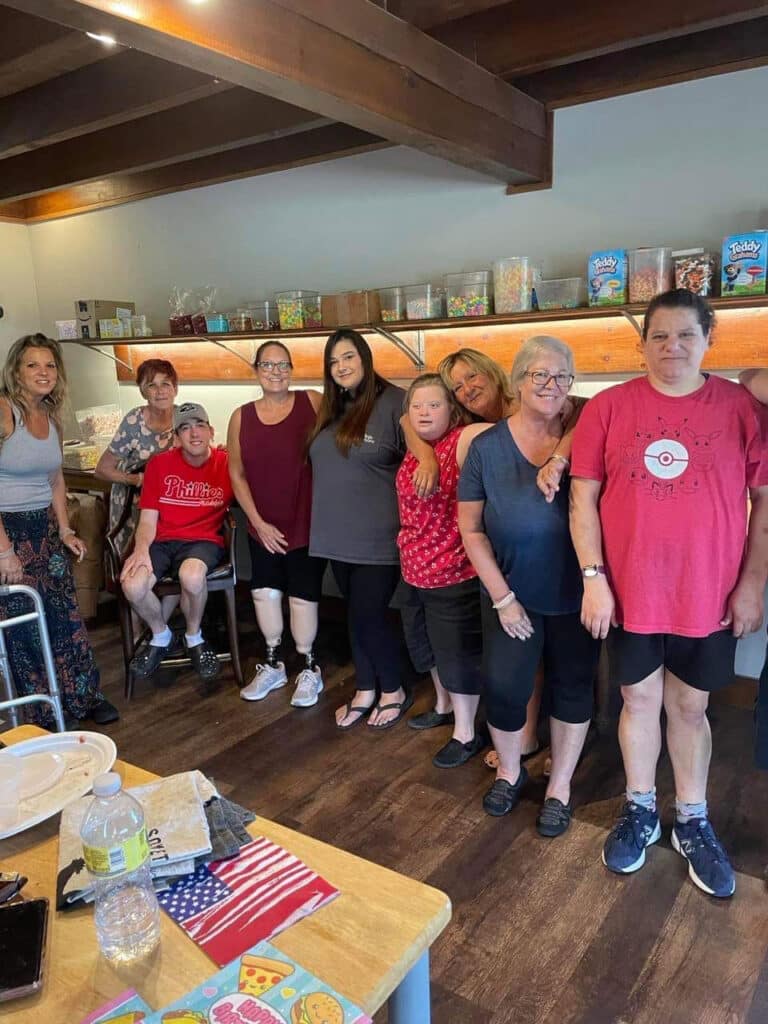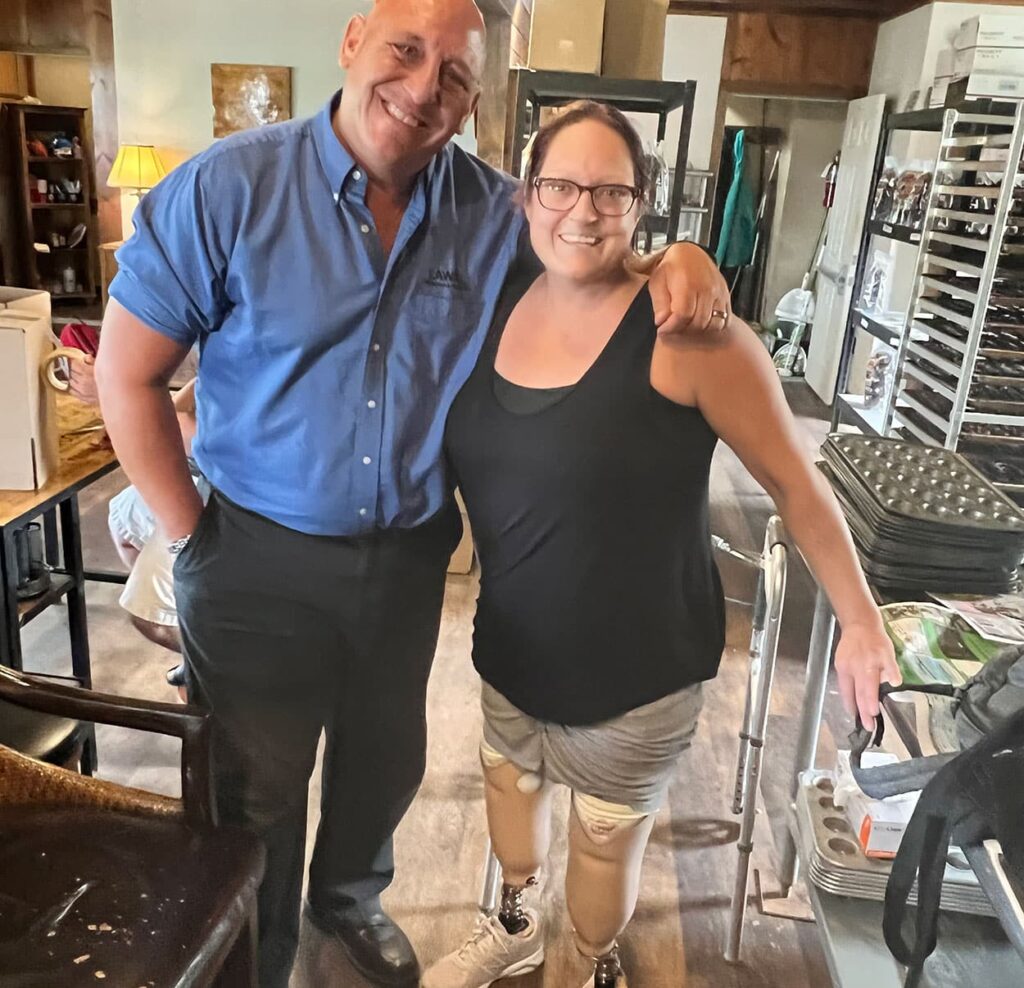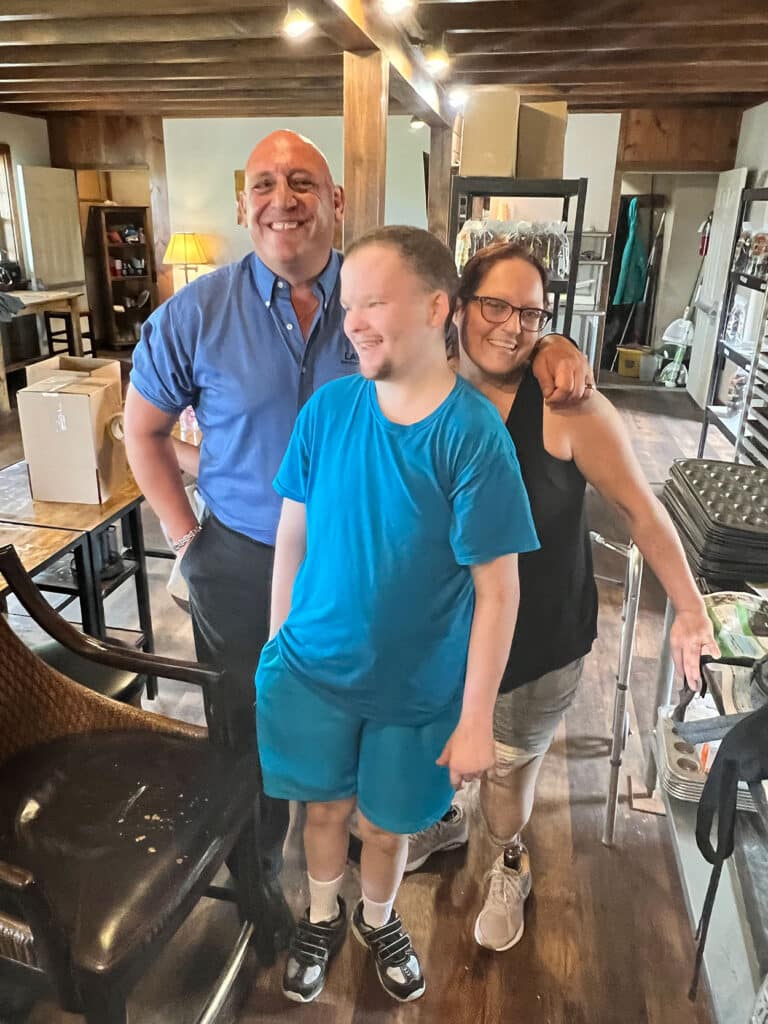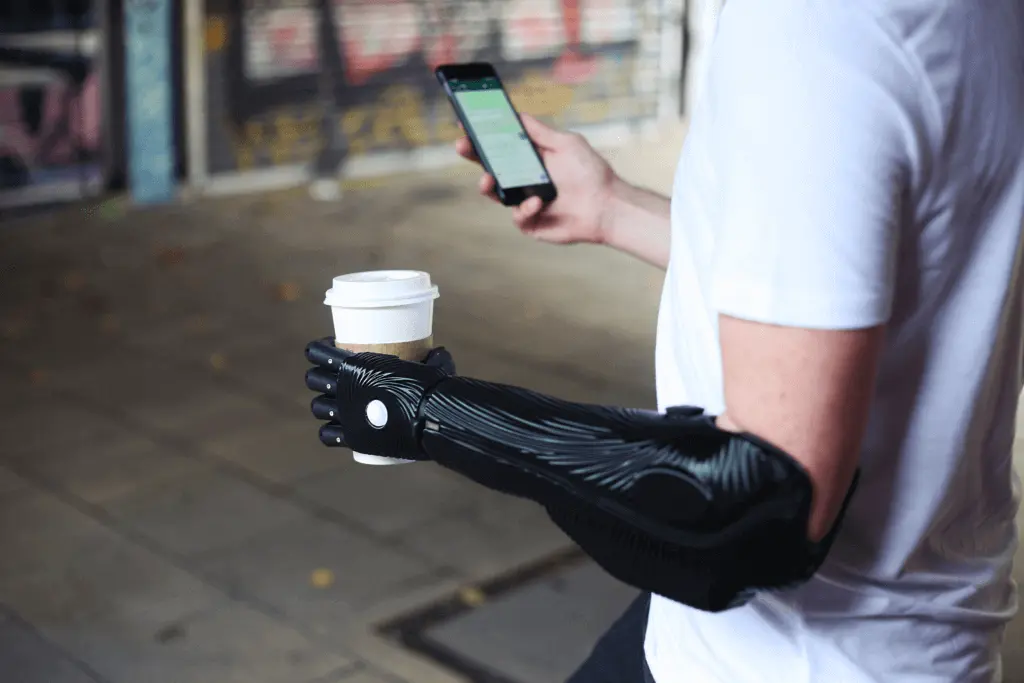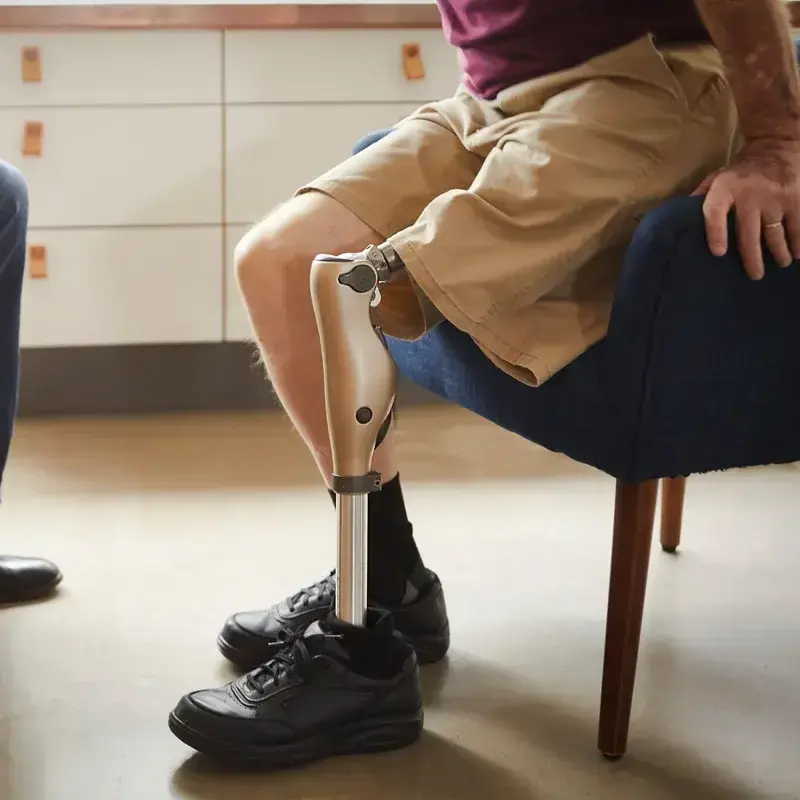There’s more than one reason that her prosthetist calls Megan Yocum “Wonder Woman.” When the odds are stacked against her, she wins through–and as each new obstacle arises, she comes back fighting!
Her anxious wait for a life-saving liver transplant was rewarded with relief in 2015—only to be replaced by crushing disappointment, as the transplanted liver brought bile disease with it. The diseased liver spread infection throughout her body, weakening and destroying her nervous system by stages during the two years that she waited for another liver transplant to replace it. The delay took a fearful toll on her body, and evolving neuropathy left her unable to walk.
“There were even a few times when they were afraid that I wasn’t going to make it,” Megan recalls. “But lo and behold, a new healthy liver came just in time!”
Her second transplant, however, still left her in a wheelchair, diagnosed with Chronic Inflammatory Demyelinating Polyradiculoneuropathy (CIDP), a rare autoimmune disorder that resulted in weakness, drop foot, and loss of mobility in her ankles and toes.
Therapy briefly helped her to ambulate by shuffling with a walker, but within a few weeks, she had lost all feeling in her legs. Although she struggled, despite her best efforts at several different rehab facilities, all were unsuccessful. “Nothing was working. It was just no good. I was unable to put any weight on my feet,” she remembers. Four months after her August transplant, Megan came home in December 2019 in a wheelchair. Then Covid hit.
“That was fun,” she reflects grimly. “About three weeks after Covid arrived, my toes started turning purple and black. They said my circulation was poor and I now had peripheral arterial disease. They amputated all the toes on my left foot; then it began affecting the right foot and they amputated the right big toe, too. Three different consultants told her she would never be able to walk again—“‘Absolutely not!’” she quoted them. That’s when the indomitable Megan decided, “Look! I’m only 45—and I’m not spending 40 more years in a wheelchair!
While exploring the possibility of supportive leg braces, she learned of another option: elective amputations of both legs, and the fitting of transtibial (below-knee) prosthetics to replace them. Her prosthetist, Lawall’s Frank Colucciello, CPO, met with her at her home to discuss how her life would be different and better with the bilateral below-knee amputations recommended by the orthopedic surgeon.
“It was a tough decision,” she admits. “Very scary. I couldn’t believe I was going through this again—something new, something else to heal from—more pain!” But after thinking it over for a couple of weeks, “It was a no-brainer!” she realized. “God made these legs for people so they can actually walk again! I had to do it –and I DID it!”
